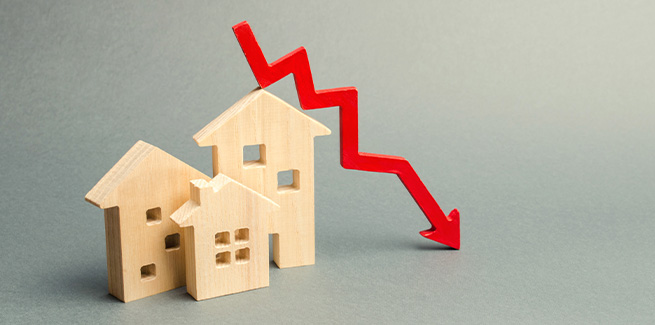Data by CoreLogic has shown that Perth dwellings have started to fall again since the coronavirus pandemic hit Australia.
According to the 28-day rolling change in the daily hedonic index, Perth dwelling values have started to fall again. However, the value falls have been mild, declining by 0.2 per cent.
Melbourne has so far seen the biggest fall in property values amid COVID-19, but even in Melbourne, the decline is less than 1 per cent.
Eliza Owen, CoreLogic’s head of research Australia, said most indicators were moving in a positive direction prior to COVID-19.
“Unemployment had fallen from 6.9 per cent to 5.2 per cent, jobs growth was trending higher, population growth had bounced back to the highest level since 2014, housing supply was contained, and state final demand crept above the decade average,” Ms Owen said.
She noted that the start of the Perth dwelling market recovery came at an “unfortunate time”. The housing market in Perth had four consecutive months of value increase in early 2020, which was the longest period of capital growth since 2014.
“The Perth dwelling market has a long road to recovery. By the end of April, the house market in Perth was -19.1 per cent below its peak value at June 2014,” Ms Owen said.
“Unit values have taken a larger hit, down -26.9 per cent below the record high at July 2013.”
Data from the ABS has shown that job losses across Western Australia have been marginally less severe than the rest of Australia. The decline in payroll jobs across the state was 5.8 per cent between 14 March and 2 May, compared with 7.3 per cent across Australia.
Perth is also less exposed to industry sectors that have been heavily hit by COVID-19, with 8.6 per cent of the local workforce employed with the accommodation and food services, and arts and recreation services sectors, compared with 9.1 per cent nationally.
Total listings
Total listings across Perth in the 28 days to 24 May were just 13,962. As of late May, total listings were down 34.7 per cent on where they were at the equivalent period in 2019.
“Though this is a continued headwind to the real estate sector, it may be preserving stability in dwelling values,” Ms Owen said.
“Total listing numbers haven’t trended higher and are at the lowest level in 10 years for this time of the year.
“The trend towards a rise in new listings and consistently low total listings implies newly listed stock is being absorbed quickly by the market.”
Mining and the economy
Despite the increased economic uncertainty, consumer sentiment levels have been improving. Ms Owen attributed this to the flattening of the COVID-19 curve, and relaxation of social distancing policies, including the lift in bans on on-site auctions and property inspections across various states.
The onset of COVID-19 resulted in the suspension of some mining operations, or reduction in capacity, in a bid to reduce the threat of infection at work sites. Payroll job losses across WA in the mining sector was 6.4 per cent between 14 March and 2 May.
However, mining companies remain positive, with BHP indicating steel production over 2020 may even be slightly higher than in 2019 if a second wave of COVID-19 could be avoided.
“Renewed vitality in the mining sector, and the subsequent boost to economic activity, is likely to provide some insulation in demand for the Perth property market,” Ms Owen said.
“This would make the impending downturn less severe than it may otherwise have been.”
Ms Owen cited housing affordability in Perth as another key factor that should support housing demand. The median value of a house at the end of April 2020 was recorded at just over $465,000, which was the lowest of any capital city.
“The blend of affordable housing options and the expectation for more resilient economic conditions is a good recipe for Perth’s housing market to outperform,” she concluded.
[Related: House listings, sale volumes plummet amid COVID-19]

